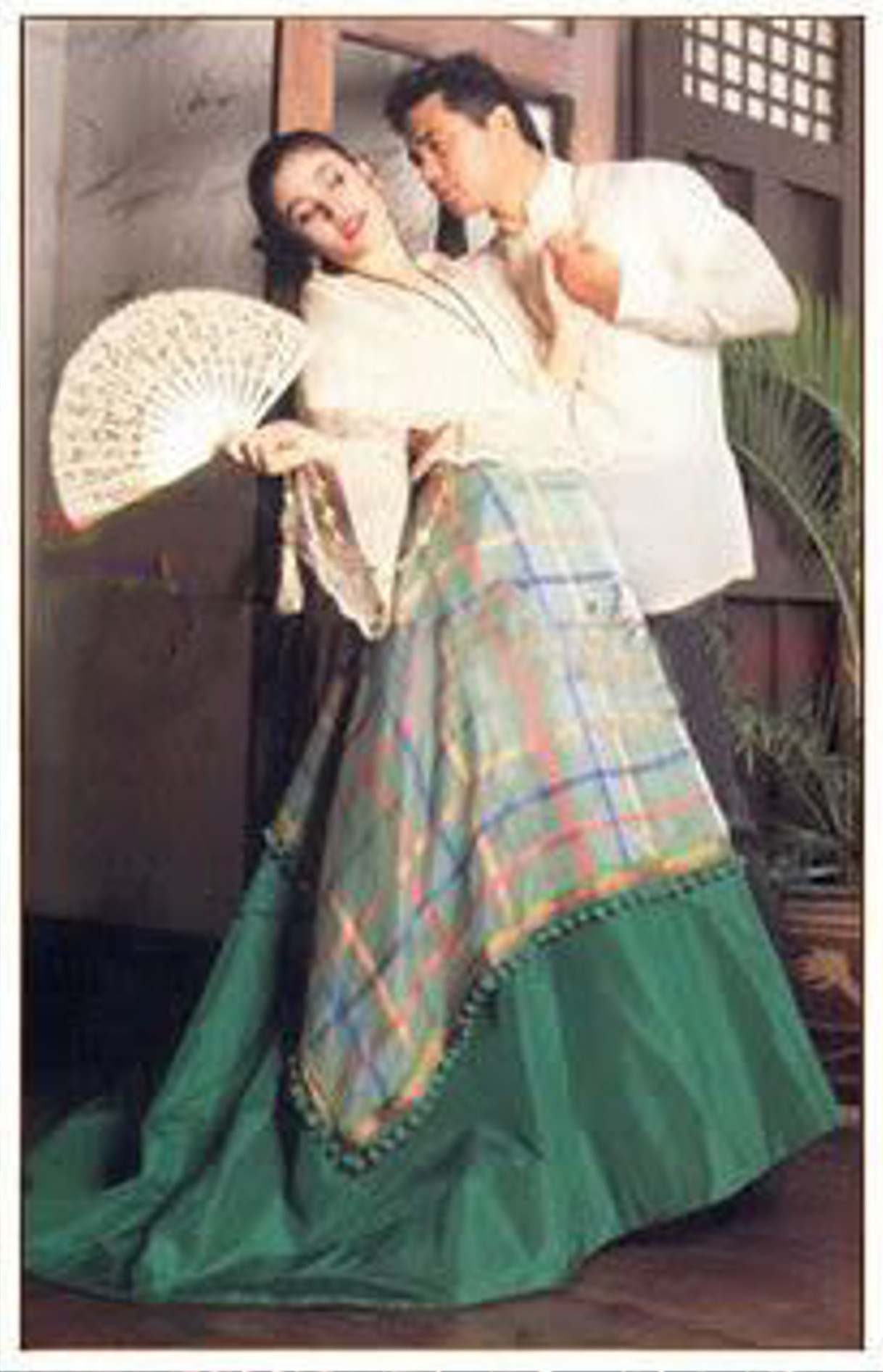Cariñosa on:
[Wikipedia]
[Google]
[Amazon]
 The ''cariñosa'' (, meaning loving or affectionate) is a Philippine dance of colonial-era origin from the Maria Clara suite of Philippine folk dances, where the fan or
The ''cariñosa'' (, meaning loving or affectionate) is a Philippine dance of colonial-era origin from the Maria Clara suite of Philippine folk dances, where the fan or
 The ''cariñosa'' (, meaning loving or affectionate) is a Philippine dance of colonial-era origin from the Maria Clara suite of Philippine folk dances, where the fan or
The ''cariñosa'' (, meaning loving or affectionate) is a Philippine dance of colonial-era origin from the Maria Clara suite of Philippine folk dances, where the fan or handkerchief
A handkerchief (; also called a hankie or, historically, a handkercher or a ) is a form of a kerchief or bandanna, typically a hemmed square of thin fabric which can be carried in the pocket or handbag for personal hygiene purposes such as wi ...
plays an instrumental role as it places the couple in a romance scenario.
History
The ''cariñosa'' originated inPanay Island
Panay is the sixth-largest and fourth-most populous island in the Philippines, with a total land area of and has a total population of 4,542,926 as of 2020 census. Panay comprises 4.4 percent of the entire population of the country. The City ...
and was introduced by the Spaniards
Spaniards, or Spanish people, are a Romance ethnic group native to Spain. Within Spain, there are a number of national and regional ethnic identities that reflect the country's complex history, including a number of different languages, both ...
during their colonization of the Philippines
The Philippines (; fil, Pilipinas, links=no), officially the Republic of the Philippines ( fil, Republika ng Pilipinas, links=no),
* bik, Republika kan Filipinas
* ceb, Republika sa Pilipinas
* cbk, República de Filipinas
* hil, Republ ...
. It is related to some of the Spanish
Spanish might refer to:
* Items from or related to Spain:
**Spaniards are a nation and ethnic group indigenous to Spain
**Spanish language, spoken in Spain and many Latin American countries
**Spanish cuisine
Other places
* Spanish, Ontario, Can ...
dances like the bolero
Bolero is a genre of song which originated in eastern Cuba in the late 19th century as part of the trova tradition. Unrelated to the older Spanish dance of the same name, bolero is characterized by sophisticated lyrics dealing with love. It has ...
and the Mexican
Mexican may refer to:
Mexico and its culture
*Being related to, from, or connected to the country of Mexico, in North America
** People
*** Mexicans, inhabitants of the country Mexico and their descendants
*** Mexica, ancient indigenous people ...
dance ''jarabe tapatio
The jarabe is one of the most traditional song forms of the mariachi genre. In the Spanish language, ''jarabe'' literally means ''syrup'', which probably refers to the mixture of meters within one ''jarabe'' (compare ''salsa'').
Typically, a jar ...
'' or the Mexican hat dance.
Bicolano ''cariñosa''
According to the book ofFrancisca Reyes-Aquino
Francisca Reyes-Aquino (March 9, 1899 – November 21, 1983) was a Filipino folk dancer and academic noted for her research on Philippine folk dance. She is a recipient of the Republic Award of Merit and the Ramon Magsaysay Award and is a designa ...
, ''Philippine
The Philippines (; fil, Pilipinas, links=no), officially the Republic of the Philippines ( fil, Republika ng Pilipinas, links=no),
* bik, Republika kan Filipinas
* ceb, Republika sa Pilipinas
* cbk, República de Filipinas
* hil, Republ ...
Folk Dances'', Volume 2, there is a different version of the ''cariñosa'' in the region of Bicol. Reyes-Aquino is a Filipino folk dancer and cultural researcher who discovered and documented Philippine Traditional dances such as the Cariñosa. In the Bicol Region ''cariñosa'', hide and seek movement in different ways. In the original version, the dancers used the fan and handkerchief as the way to do the hide and seek movement, in Bicol they used two handkerchiefs holding the two corners of the handkerchief and doing the hide and seek movement as they point their foot forward and their hands go upward together with their handkerchiefs following the movement. It is a complicated step however it is still used in the Bicol Region during festivals
A festival is an event ordinarily celebrated by a community and centering on some characteristic aspect or aspects of that community and its religion or cultures. It is often marked as a local or national holiday, mela, or eid. A festival ...
and social gatherings.
Costume
Originally, the ''cariñosa'' was danced with María Clara gown and Barong Tagalog for it is a Spanish dance. In addition, Filipino wore the ''patadyong kimona'' and ''camisa de chino'' to reveal nationalism. (a native dress of theTagalog
Tagalog may refer to:
Language
* Tagalog language, a language spoken in the Philippines
** Old Tagalog, an archaic form of the language
** Batangas Tagalog, a dialect of the language
* Tagalog script, the writing system historically used for Taga ...
regions), camisa (a white sleeve) or patadyong kimona (a dress of the Visayan people) and for boys, a barong Tagalog and colored pants.
Status as a Philippine national dance
Neither the ''cariñosa'' nor the '' tinikling'' is considered to be an official national dance of the Philippines, as no law has designated them as such. In 2014, House Representative Rene Relampagos introduced a bill in the House of Representatives to grant the ''cariñosa'' such a status, which did not become law.References
{{DEFAULTSORT:Cariñosa National symbols of the Philippines Dances of the Philippines